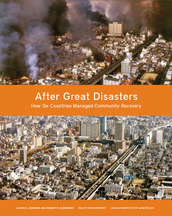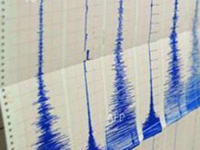2024 Disasters in Numbers
<p>In 2024, the Emergency Events Database (EM-DAT) recorded 393 natural hazard-related disasters. These events caused 16,753 fatalities and affected 167.2 million people. Economic losses totaled US$241.95
<p>In 2024, the Emergency Events Database (EM-DAT) recorded 393 natural hazard-related disasters. These events caused 16,753 fatalities and affected 167.2 million people. Economic losses totaled US$241.95
<p>The Pacific coast of the Tohoku region of Japan experiences repeated tsunamis, with the most recent events having occurred in 1896, 1933, 1960, and 2011. These events have caused large loss of life

New research published by the Lincoln Institute of Land Policy shows how metropolitan regions can rebuild for greater resilience during the reconstruction process after major disasters, whether earthquakes,

New research published by the Lincoln Institute of Land Policy shows how metropolitan regions can rebuild for greater resilience during the reconstruction process after major disasters, whether earthquakes,
Research into the aftermath of the Fukushima earthquake, tsunami and subsequent nuclear meltdown found that the oldest were least likely to experience a deterioration of existing chronic conditions.

If researchers are right, a quake would probably turn urban areas in eastern India "into ruins," according to a sesismologist. A huge earthquake that can turn urban areas in eastern India into “ruins”
The purpose of this document is to formulate guidelines for the preparation of plans to make India disaster resilient and reduce loss of lives. The plan is based on the four priority themes of the "Sendai
Officials wound back an initial tsunami threat issued after a large earthquake struck off the coast of the South Pacific islands of Vanuatu on Sunday. The Pacific Tsunami Warning Centre said the danger
<p>After the 2011 Tohoku earthquake, thirteen thousand hectares of farmlands were damaged by massive Tsunami near coastal sites in Miyagi, Japan. Some eighty percent of the damaged farmlands have been
When an earthquake strikes literally every second counts. That was the case 5 years ago when a magnitude 9 quake unleashed a massive tsunami that devastated Japan. A seismological network kicked into
<p>This study investigates the issues related to underestimation of the earthquake source parameters in the context of tsunami early warning and tsunami risk assessment. The magnitude of a very large event